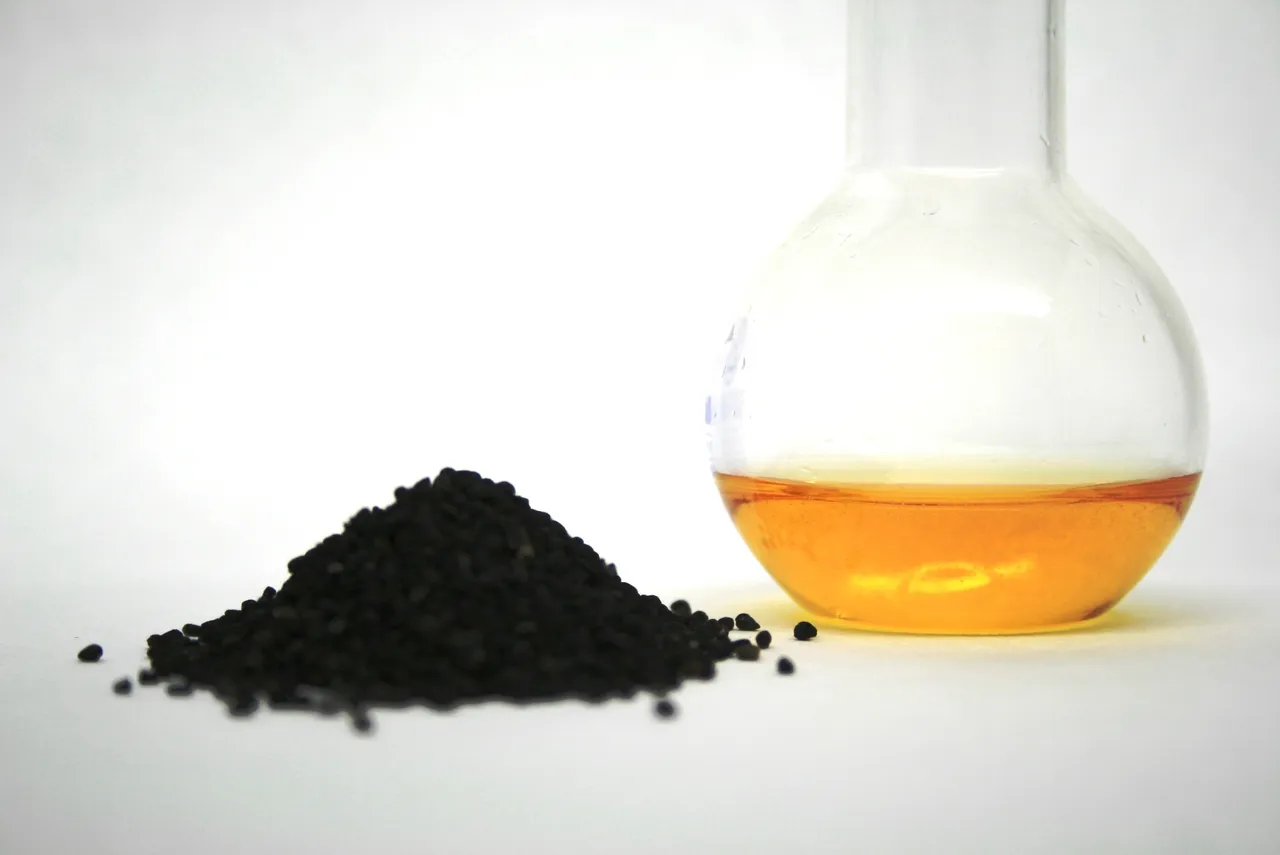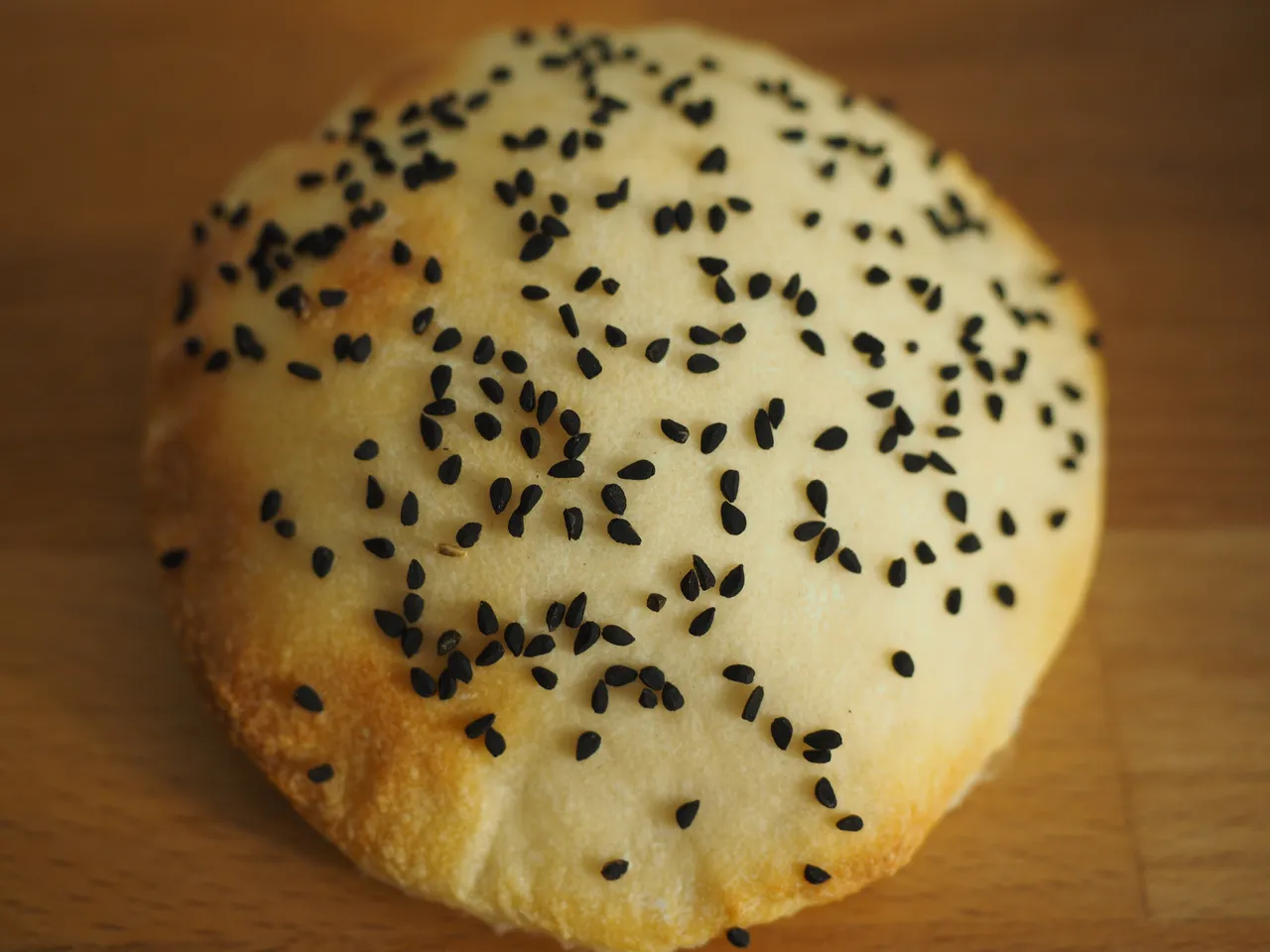Black Cumin is an amazing and highly potential in Curing of different ailments. For centuries, the Black Seed herb and oil has been used by millions of people in Asia, Middle East, and Africa to support their health.

Nigella sativa (black caraway, also known as black cumin, nigella, and kalonji) is an annual flowering plant in the family Ranunculaceae, native to south and southwest Asia.
Nigella sativa grows to 20–30 cm (7.9–11.8 inch) tall, with finely divided, linear (but not thread-like) leaves. The flowers are delicate, and usually colored pale blue and white, with five to ten petals.
The fruit is a large and inflated capsule composed of three to seven united follicles, each containing numerous seeds which are used as spice, sometimes as a replacement for black cumin (Bunium bulbocastanum).
Common names
In English, N. sativa and its seed are variously called black caraway, black cumin, fennel flower, nigella, nutmeg flower, Roman coriander and kalonji (from Hindi-Urdu)
Chemical Compounds
N. sativa oil contains linoleic acid, oleic acid, palmitic acid, and trans-anethole, and other minor constituents.Aromatics include thymoquinone, dihydrothymoquinone,pcymene, carvacrol, α-thujene, thymol, α-pinene, β-pinene and t-anethole.The seeds contain numerous esters of structurally unusual unsaturated fatty acids with terpene alcohols (7%); furthermore, traces of alkaloids are found which belong to two different types: isochinoline alkaloids are represented by nigellimin and nigellimin-N-oxide, and pyrazol alkaloids include nigellidin and nigellicin.
In the essential oil (avr. 0.5%, max. 1.5%), thymoquinone was identified as the main component (up to 50%) besides p-cymene (40%), α-pinene (up to 15%), dithymo-quinone and thymo-hydroquinone. Other terpene derivatives were found only in trace amounts: Carvacrol, carvone, limonene, 4-terpineol, citronellol. Furthermore, the essential oil contains significant (10%) amounts of fatty acid ethyl esters. On storage, thymoquinone yields dithymoquinone and higher oligocondensation products (nigellone).
The seeds also contain a fixed oil rich in unsaturated fatty acids, mainly linoleic acid (50– 60%), oleic acid (20%), eicodadienoic acid (3%) and dihomolinoleic acid (10%) which is characteristic for the genus. Saturated fatty acids (palmitic, stearic acid) amount to about 30% or less. Commercial nigella oil (Black Seed Oil,Black Cumin Oil) may also contain parts of the essential oil, mostly thymoquinone, by which it acquires an aromatic flavour.
Culinary uses
The seeds of Nigella. Sativa are used as a spice in Indian and Middle Eastern cuisines. The black seeds taste like a combination of onions, black pepper, and oregano. They have a pungent, bitter taste and smell.

The dry-roasted seeds flavor curries, vegetables, and pulses. They can be used as a "pepper" in recipes with pod fruit, vegetables, salads, and poultry. In some cultures, the black seeds are used to flavor bread products, and are used as part of the spice mixture panch phoron (meaning a mixture of five spices) and alone in many recipes in Bengali cuisine and most recognizably in naan. Nigella is also used in Armenian string cheese, a braided string cheese called majdouleh or majdouli in the Middle East.
Benefits of Nigella Sativa:
The world is simply astonished of the many benefits of Nigella sativa and the desire to find the best product grows. Besides healing cancer, there are many other benefits of black cumin, such as:
Antihypertensive
AntiTumor
Antibacteria
Antihistamine
Strengthens the immune system
Antiinflammatory
Promotes lactation
Antiparasitic

Nigella is mentioned in the Bible, but today it is well known not only in Western, but also in Central and South Asia; its main application area is Turkey, Lebanon and Iran. Turkish bread frequently shows the characteristically shaped black grains; another spice sometimes used to flavour Near Eastern bread ismahaleb cherry stones.
From Iran, nigella usage has spread to Northern India, particularly Punjab and Bengal. The spice is mostly used for vegetable dishes; I think it tastes best with aubergines and pumpkin, of which there are many varieties in Bengal. Lake many other Indian spices, nigella develops its flavour best after short toasting in a hot dry pan, or short frying in a little oil (see also cumin).
In the Indian union states West Bengal, Orissa and Sikkim, as well as in Bangladesh and Southern Nepal, a spice mixture made from five spices is very popular: Panch phoran [পাঁচ ফোরন or পাঁচ ফোড়ন], better known under its name in Hindi panch phoron [पांच फोरन]. It is used both for meats and vegetables. The composition mostly given in the literature is whole nigella, fenugreek, cumin, black mustard seeds and fennel at equal parts; but this is not the authentic recipe. In Bengal, cooks use a spice called radhuni [রাধুনি] for that mixture, which is replaced by black mustard seeds elsewhere, as radhuni is hardly available outside Bengal, even in the rest of India. Radhuni is the dried fruits of Trachyspermum roxburghianum (syn. Carum roxburghianum), a relative of ajwain and caraway; its flavour is, however, more akin to the aroma celery seeds which I recommend as a substitute; it does, however, also exhibit a pungency comparable to that of ajwain.

Preliminary studies have investigated claims from traditional medicine that N. sativa has efficacy as a therapy, mainly using the seed oil extract, volatile oil, and isolated constituent thymoquinone. One meta-analysis of clinical trials found weak evidence that N. sativa has a short-term benefit on lowering systolic and diastolic blood pressure, and another found limited evidence that various extracts of black seed can reduce triglycerides and LDL and total cholesterol, while raising HDL cholesterol.
The Prophet Muhammad(peace and blessings be upon him) said, "There is healing in the black seed for all diseases except death".From this hadith we can remark that how this seed is Miracle and have many healing effects for lots of diseases.
Black Seed is considered to be the greatest healing herb of our time and it has been much neglected. It is being used to strengthen the immune system, fight and irradiate Prostate Cancer and other tumors, purify the blood and increase longevity. Black seed was found in King Tut's tomb, proving the value of this herb to the Kings.
Prophecy of the Black Seeds
Prophet Mohammad was quoted as saying, "There is healing in Black Seed for all diseases except death." It is also believed that honey was part of the blessed seed treatment. It was part of the tradition to put some honey and ground whole black seeds in the palm of your right hand and lick it up with your tongue. In the days of Prophet Mohammad there was no black seed oil.